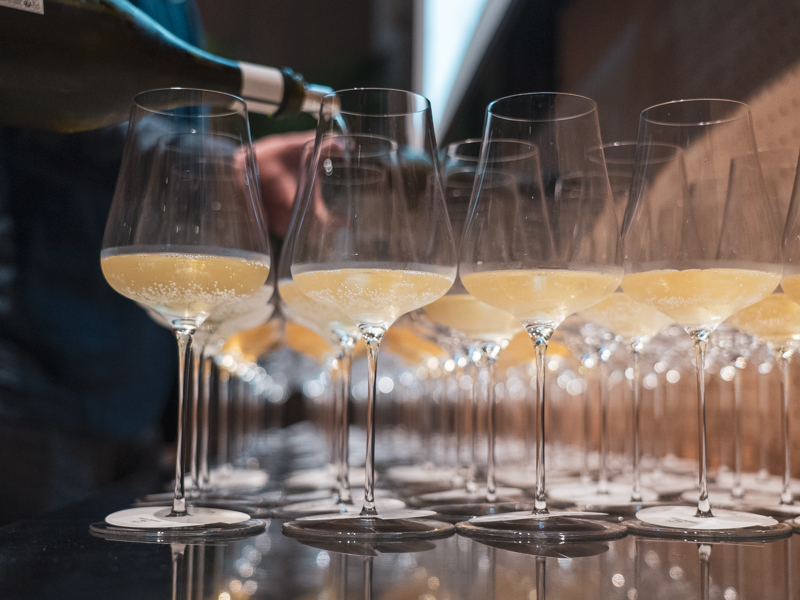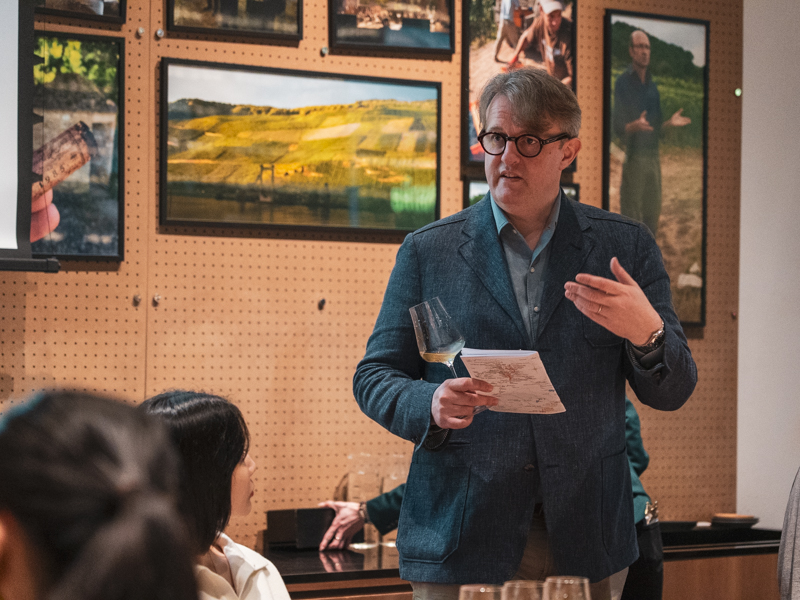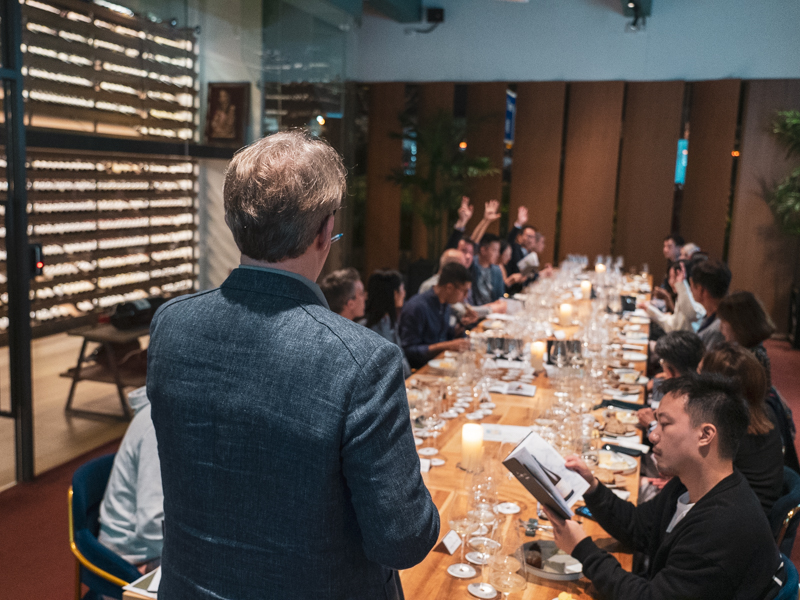

By Linden Wilkie, 9 Feburary 2024
I am a fan of Champagne, but must admit to undergoing a fairly recent journey of discovery with the region. I’ve been drinking it for over 30 years, so, as you can imagine, much of that time has been focused on the classic grandes marques, and when fortunate enough, their cuvées de prestige. I remain a fan of good quality in this tradition.
Somewhere along the way, around the mid-2000s, I got to try the new scene ‘grower’ Champagnes from some of the pioneers, Jacques Selosse, Pierre Péters, Egly-Ouriet, and others, and it was clear that something extra was being added to the picture. But what, exactly?
To understand that we must look at the status quo. Champagne produces a large amount of sparkling wine, with I think the singularly most successful marketing of any wine region. Champagne is celebration, prestige, luxury. The name is fiercely and successfully defended, despite having given the region’s name to a style of wine, and not just an origin. Part of the success is in the knowhow of blending – blending grape varieties, blending villages, blending vintages – to create a recognizable house style, consistent from year to year, overriding the vicissitudes of weather, year to year. It’s also one of the world’s most made wines. For, beyond all that blending, is the art of the second fermentation in bottle, ageing on lees, and adding just the right amount of dosage (ahem, sugar) before shipping it to market.

What we don’t see behind this array of successful brands (amongst them some of the most successful brands ever created), is that the region itself is still a region of farmers, many with quite small holdings. Over 16,000 farmers supply their grapes to make Champagne’s 300 million or so bottles. Growers who make and market their own wine – recoltant-manipulant – are a drop in the ocean. Stats I have seen suggest these only make up 5% of the US market, and just 1.4% of the UK market. There’s no revolution in scale taking place here, but there is one nonetheless. But in what ways?
Firstly, what I have observed first hand visiting over recent years, is in farming. Although grower Champagne producers have a range of philosophies in the cellar, a consistent thread is that they really care about farming. They make up a disproportionate share of the tiny percentage of organic farming done, will often prune and manage their vineyards to produce much lower yields than what is permitted by the AOC, sort fruit carefully, and harvest for optimum fresh-ripeness. I have seen this time and again in the cellars of these growers. It is especially clear when tasting the vins clairs – the still wines that go into bottle for secondary fermentation. They have more intensity of flavour, are closer to finished ‘wines’ than most vins clairs.
The implication for this is seen often in the decision to add very little (Extra Brut), or no dosage at all (Brut Nature, or Brut Zero) after disgorgement, when the less is removed and the cork put in ready for market. The wines have enough ripeness and intensity to work without it.

The second thing I see often is the unpacking of the Champagne ‘blended’ concept. While many growers will make a Champagne with a blend of grape varieties, it is very common to see examples made from one variety only (giving us the chance to really get to know Chardonnay, Pinot Noir or Meunier in a pure varietal expression). Growers also often specialise not only in a sub-region, or even village, they will often also make a Champagne from a single lieu-dit, or vineyard plot, and describe the specific terroir on the back label (where there is often a wealth of other information). And, while many front labels won’t show a vintage (in the way that grande marques distinguish their vintage and non-vintage lines), growers will often make a single variety Champagne from a single vineyard, and also from a single vintage. In this way they are saying “we are not about consistency, we are about expressing nature – the grape, the terroir, the vintage” in just the same way that a producer in Burgundy, the Mosel might do. That brings Champagne into the orbit of those of us enthusiasts who enjoy going deeper into understanding a region.
Last week I had the pleasure to host a dinner at Bâtard featuring eight growers (and one amazing cooperative) that we work with, with an example from each. The flavour intensity, and low (or no) dosage, made these great matches to the menu, making them especially versatile – slipping happily between the role of aperitif, and capable companions to food.
Of course, I am simplifying the overall picture here a bit. But I think if you have not yet really dipped your toe in the water with grower Champagne, you are missing out on something that you may find really satisfying to explore. To aid in keeping this email (relatively!) brief, below you will find a very short note from me on what I find interesting about each of the wines we served at the dinner. At the end of our dinner I asked the 21 guests to vote for their two top favourites of the night – the results of that vote are noted below too.
As ever we are here to help, so if you would like advice, or if we could put together a tasting selection for you to explore with family and friends this Chinese New Year, please let us know.

Champagne Chavost ‘Blanc d’Assemblage’ NV (2021 fruit in this bottling)
Innovative cooperative led by the dynamic Fabian Davaux. Zero SO2, zero dosage. Very dinkable. 50/50 Chardonnay/Meunier. Our aperitif.
1 vote.
Champagne Doyard ‘Rev0lution’ Brut Nature
100% Chardonnay from prime sites in Côte de Blancs grand crus. No dosage. Good intensity, apple and pastry tone.
0 votes.
2017 Champagne Chartogne-Taillet ‘Chemin de Reims’
100% Chardonnay from a lieu-dit at Merfy in the north at the Montagne de Reims. Mineral, pure, elegant, builds with each sip.
7 votes.
2017 Champagne Marie Demets ‘Fins’
100% Chardonnay from Côte des Bars. 873 bottles made. Oak vinification initially and it has a structured Burgundy feel. Must try.
5 votes.
2017 Champagne Cazé-Thibaut ‘Le Chemin des Plants’
100% Chardonnay, Vallée de la Marne. Fabien Cazé makes about the best vins clairs I know, just 2.66ha total. Explore the range.
10 votes.
(2019) Champagne Petit Clergeot Chevry Brut Nature
100% Pinot Noir from one 1975-planted plot in the Côte des Bars. Scented, complex, very pure, a lot of freshness. Zero dosage.
2 votes.
(2018) Champagne Maurice Choppin ‘Les Terres des Reguins’
100% Meunier from a 1966-planted single vineyard. Rich and creamy, the barrel comes through here, with fruit intensity to marry.
7 votes.
Champagne Ullens ‘La Petite Montagne’ (L.P.M.) Extra Brut
100% Meunier from far north Massif de St.-Thierry. Pure, balanced, aromatic. 2020 Gault Mileau winemaker of the year, Maxime Ullens.
5 votes.
Champagne Georges Laval ‘Garennes’ Extra Brut
Chardonnay/Meunier blend, base 2021 with some 2013, 2020 reserve. Organic here since 1971. Airy, pure, concentrated, very clear and long. My personal wine of the night.
5 votes.
